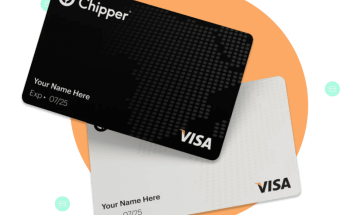Being able to fight for user retention will be more important than ever in the years ahead, with the number of smartphone users expected to expand from the current 3.6 billion in 2020 to around 4.2 billion by 2023.
But before we get to it, let’s have a look at the basics Most often, users remove an app because of a bad initial impression before they navigate or because of a shoddy app design. Providing a better user experience for prospective consumers is the greatest way to avoid this. Initially, it seems to be straightforward, but how do you get started?
If you’re looking for a mobile app development business that also provides UI/UX design services, we can tell you that app design is just as important as its functionality.
⇒Join us on Telegram for more Sure and Accurate football-winning tips every day...click here
In this essay, we’ll take a closer look at what constitutes sound design principles.
What does App Design mean?
In app design, UI and UX are intertwined, and app designers are responsible for creating a visually appealing app, while developers are responsible for making it work properly.
For a wide range of activities, consumers rely on mobile devices on a daily basis. Users are finicky. After the initial usage, a huge proportion of people give up on an app. As a result, it’s critical to put in the time and effort necessary to build an app that consumers will like.
Quick reminder: mobile app design services – Fireart will always help you with development and maintenance.
The Best Ways to Design Mobile Apps
Now, let’s get down to the nitty-gritty of mobile app design best practices from the professionals.
- Streamline the process of onboarding.
Onboarding is the initial experience a consumer has with a product. They won’t open your app again if they have trouble accomplishing things the first time.
Onboarding is all about showing customers how your software can make their lives easier by showing them how they can execute certain tasks more quickly and effectively.
The simplest premise for attracting and retaining customers is to provide a positive user experience. After the first week of usage, Localytics reports a user retention rate of only 25 percent. As well as improving short-term success measures like user retention and lifetime value, effective onboarding also has the potential to boost long-term success metrics like lifetime value and abandonment rates.
- Make Your App Easy to Use.
Keeping this in mind will guarantee the final product meets the consumer’s expectations. This means reducing the number of steps required to get information, hiding superfluous actions, and not offering excessive data.
Users must also expect to pick up where they left off. The finest features and content won’t help if consumers can’t find them. My app should evaluate whether or not users will be allowed to use the app’s functionalities at their own discretion.
- Consistency is the key to success.
It’s essential to keep things consistent. Ignoring this fundamental concept of design will not provide any benefits in the long run.
As a result, what does “consistency” imply in the context of mobile app design? We need to stick to the same language here, so let’s take a closer look:
- Consistency in appearance. Consistency in design may be achieved by using the same buttons, icons, typefaces, and labels across the program.
- Consistency in operations. The application’s interactive components must operate in the same way throughout.
- Consistency on the outside. To portray external consistency, your design should appear the same on all platforms, including mobile applications, websites, and web apps.
Make a mobile app prototype! Prototyping, if done correctly, increases your chances of product success by 50%.
- Decluttering is an important part of this process.
The clutter is the worst part of building a mobile app. Your users will be able to grasp your app design more efficiently if you remove anything that isn’t required.
This difficulty may be solved by implementing functional minimalism, which includes the following:
- Display just the information that the user needs to see – don’t overwhelm them with unnecessary details.
- Put as few UI components as possible on the screen. A standardized design makes things easier to comprehend for the end-user. It’s preferable to utilize the tab bar (on iOS) and the navigation drawer as conventional navigation patterns (for Android).
- In order to present a variety of choices, use the progressive disclosure strategy.
- Constraints on User Activity
Don’t switch on the signup board before the user has had a chance to study and become acclimated to the app, since the majority of users will prefer to do so.
Even if your company relies on client data, it’s important to remember that a signup board pop-up is the most frequent reason customers exit the app.
Registration should only be requested if it is absolutely essential, such as when your app’s primary feature is only accessible after a successful registration. Delaying enrollment until after the user has had some time to play about with the app is the wisest course of action, even in this case.
Making a mistake while typing on a tiny screen is far more likely, which makes it more important to do it right. Filling out a form is the primary task of the user, therefore include smart elements to help them do so. It’s laborious to input an address on any registration form, for example. Using tools like Place Autocomplete Address Form, you may make it easier for people to enter their addresses.
- A custom keyboard may be shown based on the query’s requirements.
- Keep track of each time a user enters a value into a field to ensure that they do it properly the first time.




